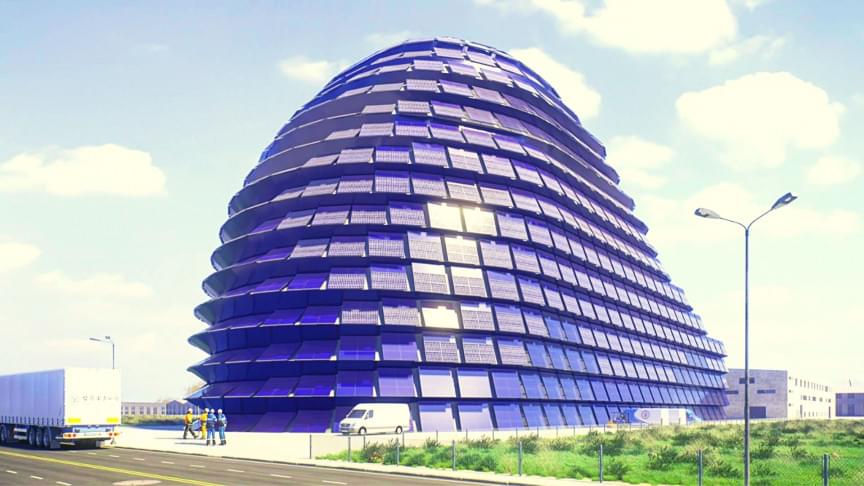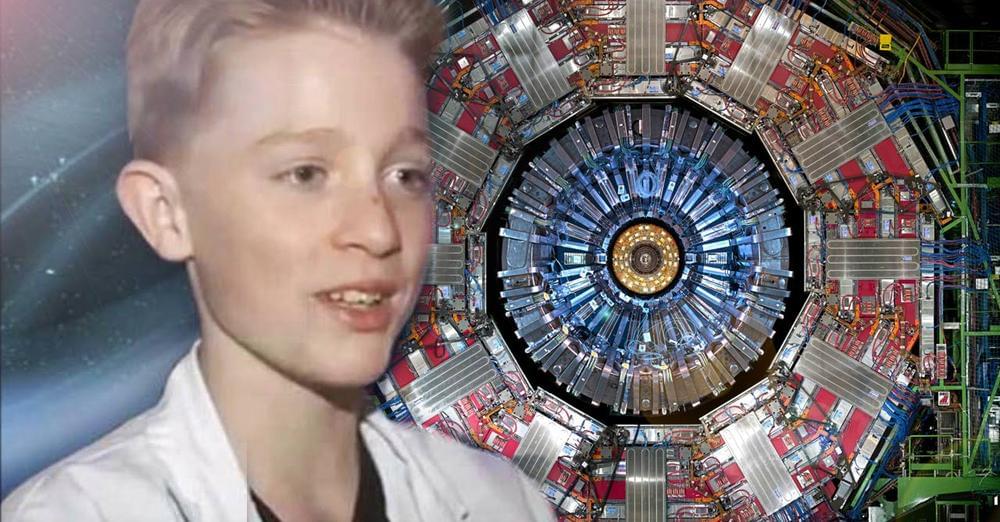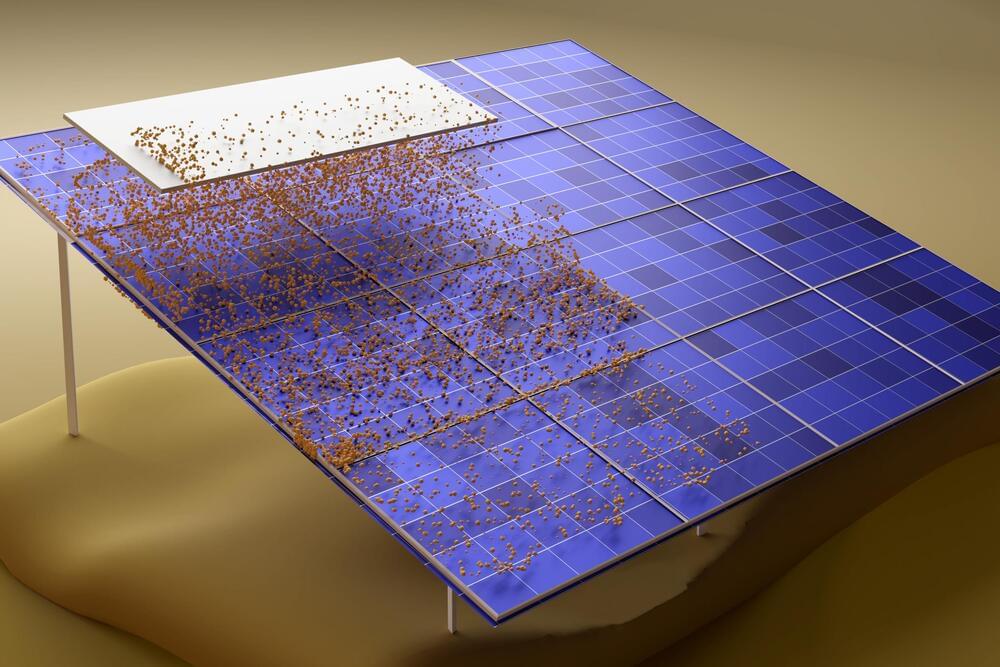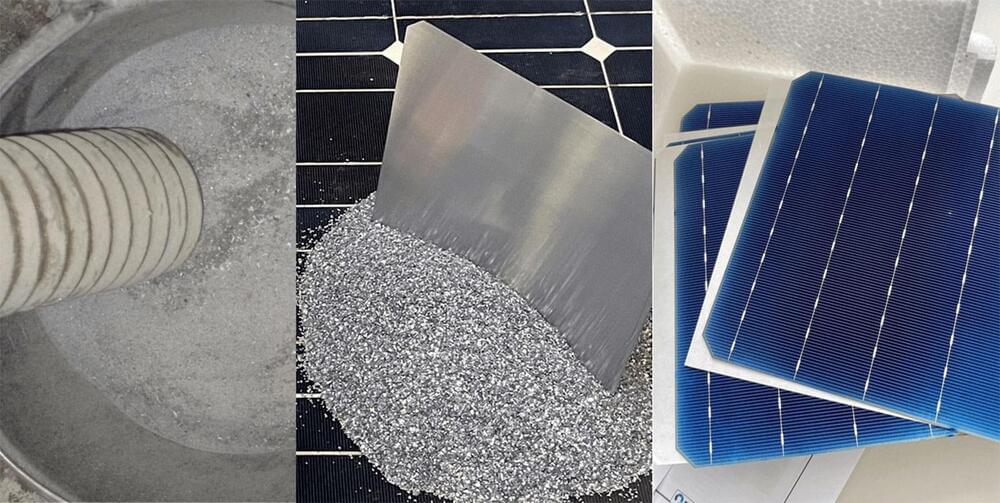Up to 50% of the energy absorbed by a solar cell is lost as heat. Scientists are now developing a third generation of “hot carrier” solar cells that take advantage of this heat, potentially breaking the Shockley-Queisser limit of silicon-based PV.



Get in, we’re going to the threshold. Solar power is undoubtfully one of the most preferred renewable energy sources of the day. As the need for energy rises with the improving technology and the rising population, companies try to come up with the most efficient solutions that promise to meet the energy demand of the world.
Taiwan’s forthcoming Sun Rock could supply excess energy to the power grid
Taiwan’s government-owned power company, called Taipower, commissioned Sun Rock, with plans to use it as a visitor facility, in addition to a storage and maintenance center for renewable energy devices. But the most obvious and impressive feature of the forthcoming project is the facade, which will be almost totally smothered in solar panels (don’t worry, there will also be vents and windows to promote the natural exchange of light and air). But 1 million kWh is a lot — the U.S. government has found that an average household uses roughly 11,000 kWh annually, which will rise (because of course it will) before the Sun Rock is finished.
“The site for Taipower’s new facility receives a significant amount of solar exposure throughout the year, and so the rounded shape of Sun Rock is designed to maximize how much of that sunlight can be harnessed for energy,” said MVRDV in a New Atlas report. “The facade maximizes this solar potential with a series of pleats, which support photovoltaic panels (mixed in with windows, where required) on their upper surface. The angle of these pleats is adjusted on all parts of the facade to maximize the energy-generating potential of the solar panels.”

Need to get 24/7 solar panels up and running.
Inspired by the cognitive science theory, we explicitly model an agent with.
Both semantic and episodic memory systems, and show that it is better than.
having just one of the two memory systems. In order to show this, we have.
designed and released our own challenging environment, “the Room”, compatible.
With OpenAI Gym, where an agent has to properly learn how to encode, store, and.
Retrieve memories to maximize its rewards. The Room environment allows for a.
hybrid intelligence setup where machines and humans can collaborate. We show.
That two agents collaborating with each other results in better performance.

There’s still a long way to go, but it’s an important milestone.
Ten years ago, solar and wind didn’t even make up 1% of our global energy mix. Now, in just a decade, they’ve reached 10%. It may not seem like much, but becoming such a significant part of the global energy mix in such a short time is remarkable — though there’s still a long way to go.
The past couple of years have been horrendous in more ways than one, but that doesn’t mean all is bad in the world. In fact, renewable energy continued its impressive growth, according to research from Ember, a climate and energy think tank.
As the world recoiled after the first year of the COVID-19 pandemic, economies were eager to reopen, and demand for energy surged. Some of what growth was covered by coal, which experienced its fastest growth since 1985, but renewables also rose to the challenge.

It is intended to be scalable and adaptable to a variety of settings, such as on the rooftops of inner-city buildings. The aim was to design and build a system that could be replicated in both rural areas and on roofs of urban building spaces.
The 130-square-foot structure is constructed from Aleppo Pine (Pinus halepensis) that was milled, dried, processed, and pressed into laminated wooden elements on-site at Valldaura. The glass roof, carefully arranged in a heliomorphic ‘diamond’ shape, allows for full solar capture both by the plants inside and the semi-transparent solar panels integrated within the glass to power the entire structure. The greenhouse only uses about 50% of the energy it produces, leaving the other half for the nearby Valldura Labs facility.
The solar-powered greenhouse also features a fully functional nutrient delivery system consisting of storage tanks, nutrient inflows, tubing to feed the plants directly, and a matrix of LED strip lights to facilitate longer growth cycles. The ground floor will be used for germinating the seedlings that will be planted in the gardens, while the upper level will generate a sizable harvest using advanced hydroponic techniques. All planting beds will use a sawdust substrate, a former waste product of the Green Fab Lab at Valldaura put to imaginative reuse.

The young man has made several statements that compromise the scientific community, but the most shocking is related to CERN and how it could have destroyed our universe.
Regarded as a genius child and listed as the “most intelligent young man in the world”, Max Laughlin surprised the world with his great intellectual abilities.
With only 13 years old he could develop from scratch its own device for energy access. A system that is capable of providing all the necessary energy without the need for oil, coal or solar energy.

Scientists from the University of Surrey and Imperial College London have achieved an increase in energy absorption in ultra-thin solar panels by 25%, a record for panels of this size.
The team, which collaborated with AMOLF in Amsterdam, used solar panels just one micrometer thick with a disordered honeycomb layer on top of the silicon panel. The biophilic design draws inspiration from butterfly wings and bird eyes to absorb sunlight from every possible angle, making the panels more efficient.
The research led to a 25% increase in levels of energy absorption by the panels, making these solar panels more efficient than other one-micrometer-thick panels. They published their findings in the American Chemical Society’s journal, Photonics.


The installations of photovoltaic (PV) solar modules are growing extremely fast. As a result of the increase, the volume of discarded solar modules that end up on the recycling market annually will grow at the same rate in the near future. Currently, the aluminum, glass, and copper of the discarded modules are reprocessed; however, the silicon solar cells are not.
Now, researchers from the Fraunhofer Center for Silicon Photovoltaics CSP and the Fraunhofer Institute for Solar Energy Systems ISE, together with the largest German recycling company for PV modules, Reiling GmbH & Co. KG, have built new PERC solar cells with 100% crystalline silicon recycled from end-of-life photovoltaic panels.
The team has developed a process for recovering the silicon material with funding from the German Federal Ministry for Economic Affairs and Climate BMWK. The technique is claimed to recycle silicon from different types of crystalline silicon PV modules, regardless of manufacturer and origin.
Like electric vehicles – traditionally seen as expensive and niche – solar power is now becoming a realistic option for many households, as well as businesses wishing to decarbonise their operations. While the upfront costs of installing a photovoltaic (PV) rooftop system can be expensive, home solar will usually pay for itself within 5–10 years – and then provides the owner with an essentially free, limitless supply of clean energy, decentralised and unaffected by price volatility. Unlike the world’s increasingly scarce, finite supplies of coal, oil and gas, our Sun will continue to shine for another five billion years. Home solar can also be combined with batteries (which, like solar, are rapidly declining in cost) for energy storage at night.
At the utility scale, gigantic solar projects are now emerging in many countries. Recent years have seen the first gigawatt-scale (GW) facilities. The largest has a nameplate capacity of 2.3 GW. China is the world leader, accounting for 30% of all solar electric generation, followed by Europe (21%) and then the USA (16%). The vast majority is produced from PV modules, with a small fraction obtained by concentrated solar power (using mirrors or lenses to concentrate a large area of sunlight onto a receiver).
Following decades of rapid growth, the worldwide installed capacity of solar power has passed 1 TW this month, according to PV Magazine, an international trade publication headquartered in Berlin, Germany. The magazine has based its analysis on data from Bloomberg New Energy Finance (BNEF).